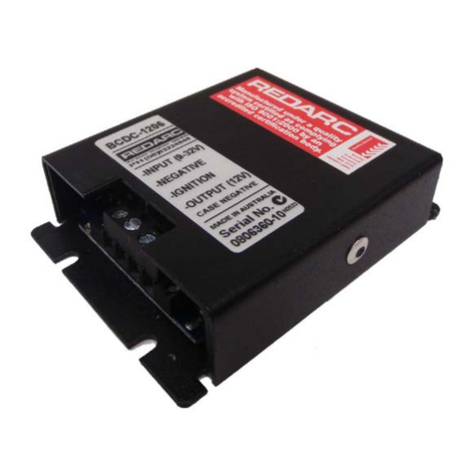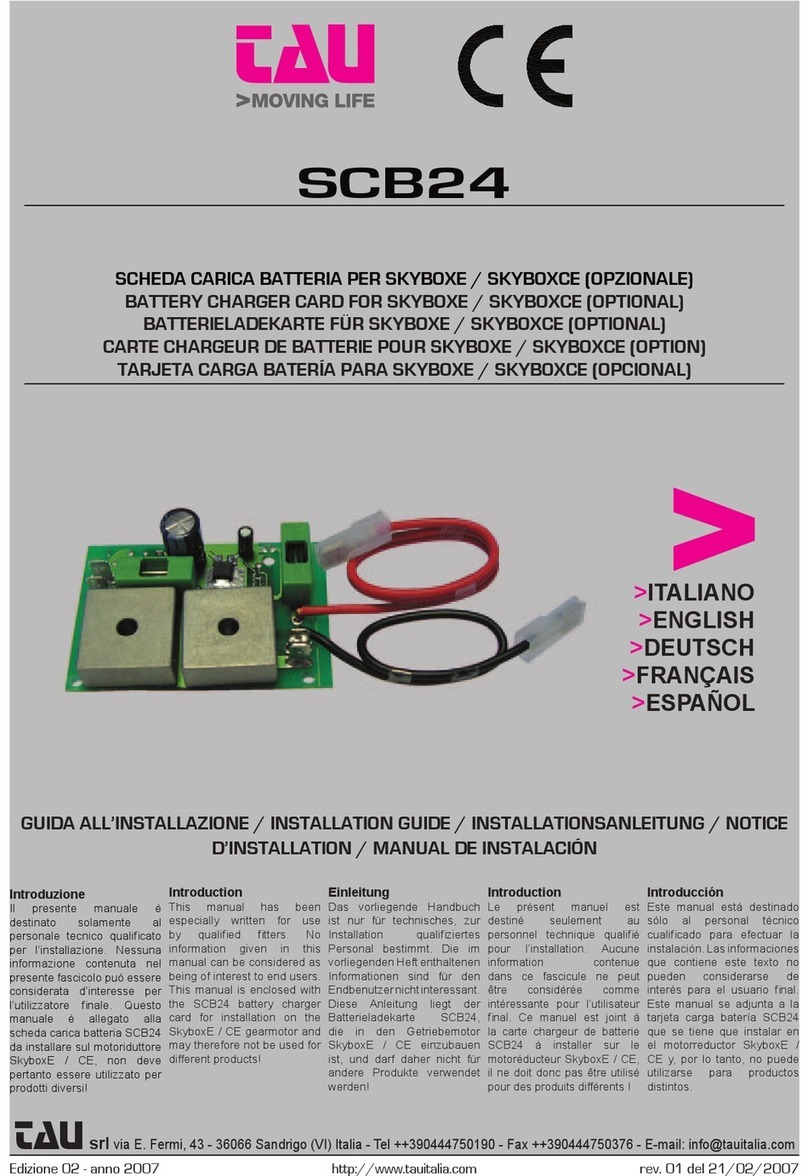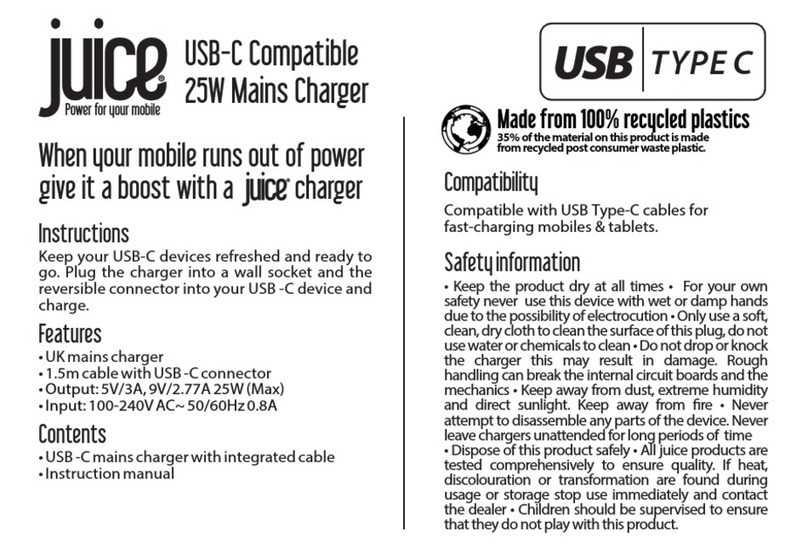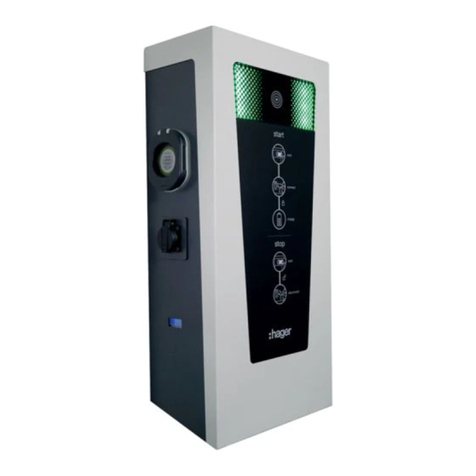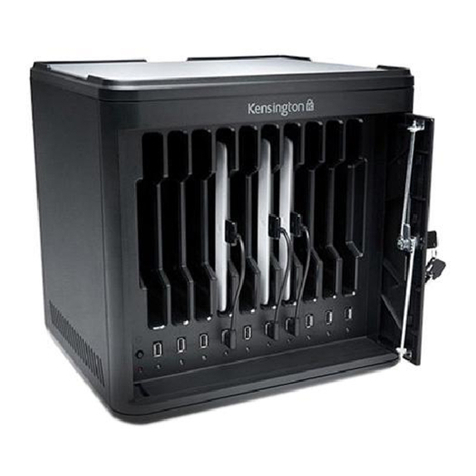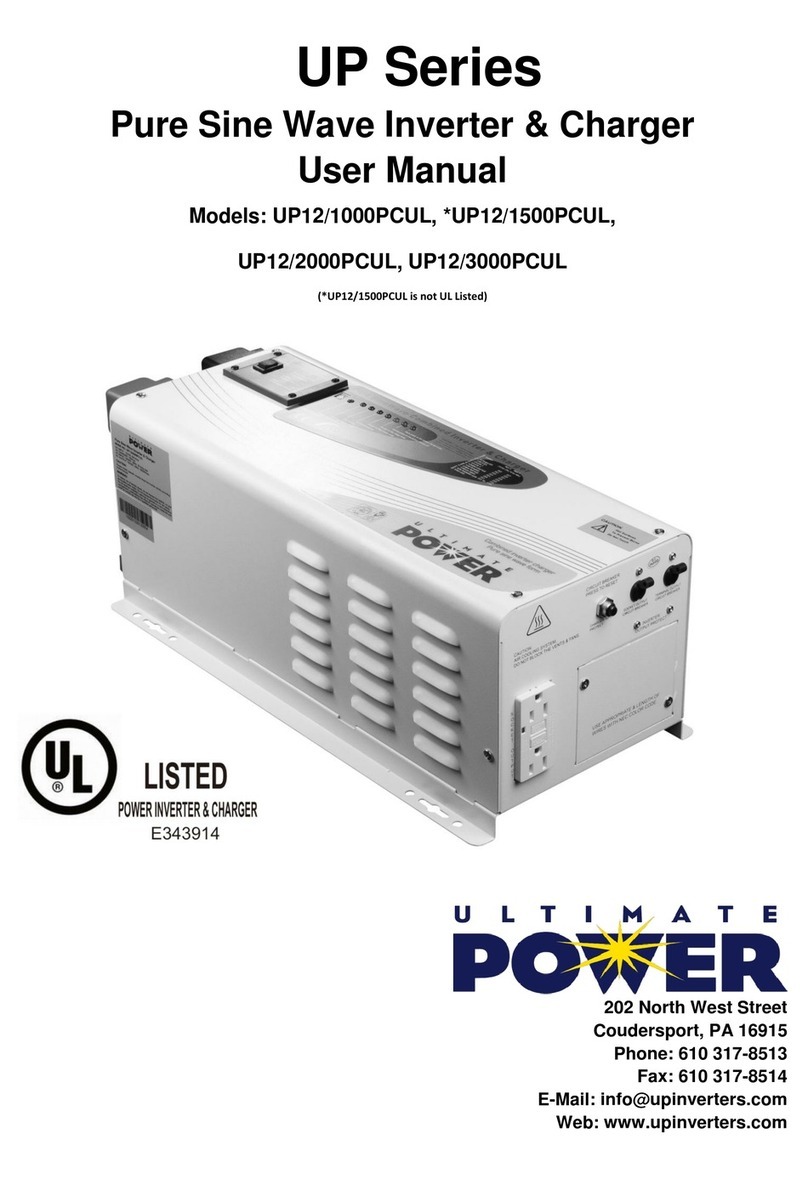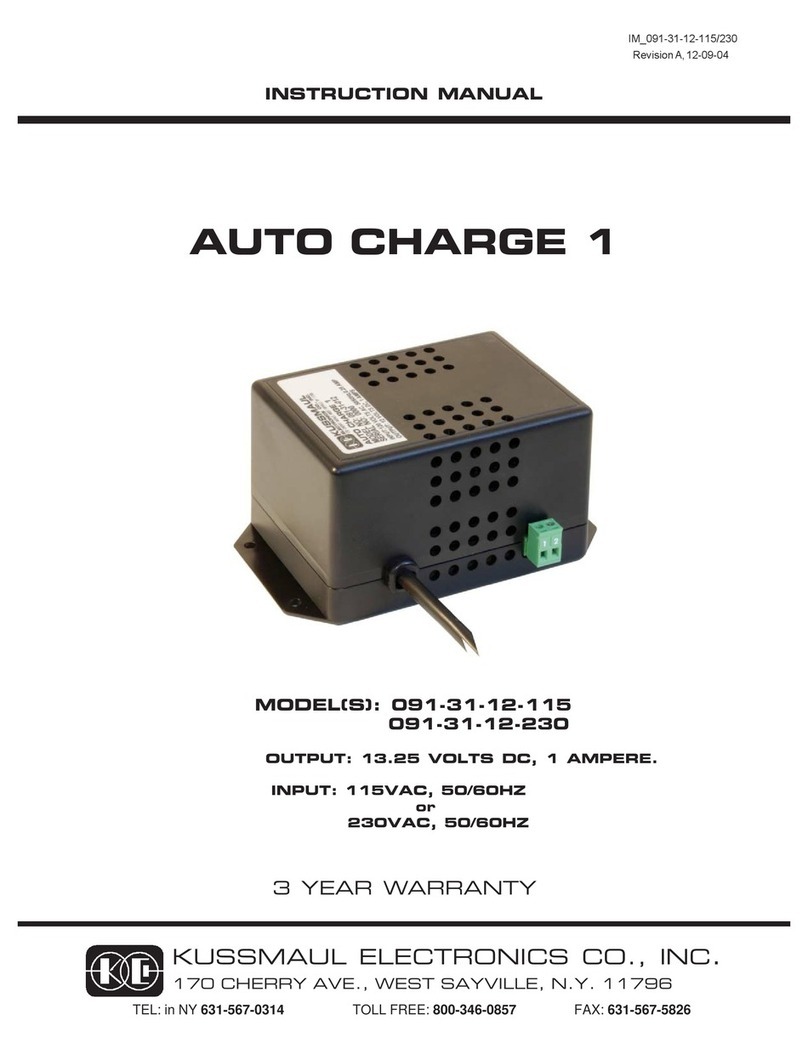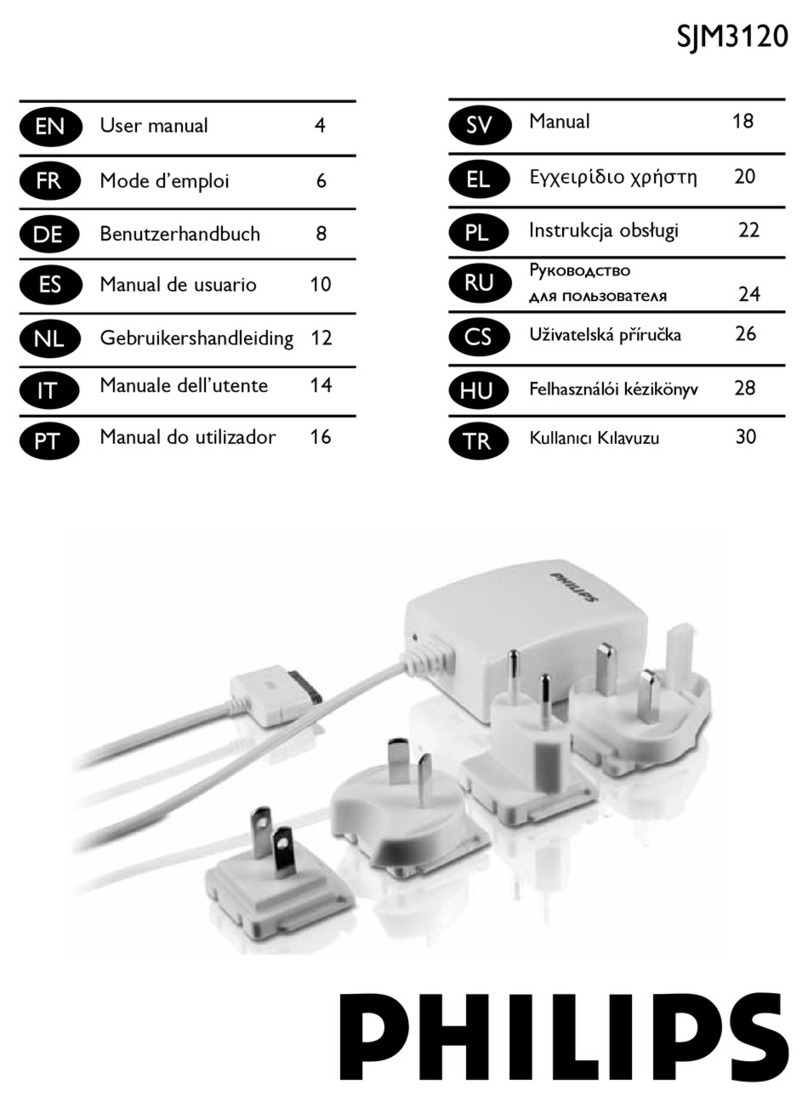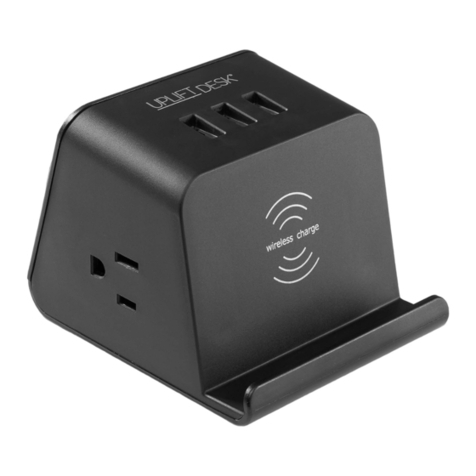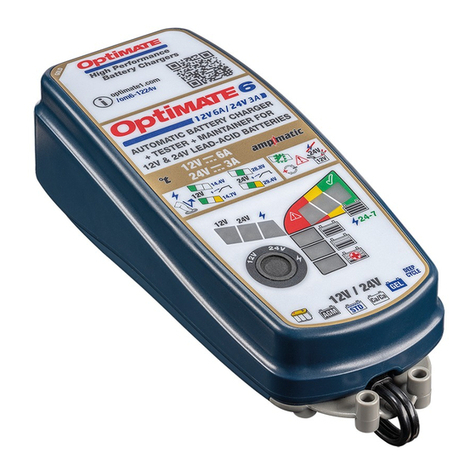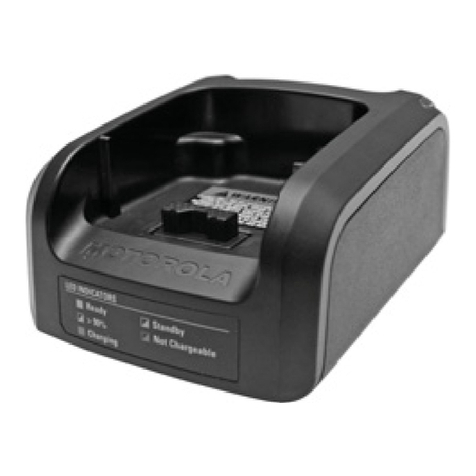MAC SCR Series User manual

601 International Ave.
Washington, Missouri 63090
(636)239-2772
(636)239-5652 ( AX)
M14486 - 0010 REV C

Table of Contents
PAGE
1.
Features
3
2.
Introduction
3
3.
Installation
3-5
4.
Pre-Operating Procedure
5-6
5.
Theory of Operation
6-7
6.
Normal Operation
7-9
7.
Full Charge Sentry
9-10
8.
Troubleshooting
10-17
9.
Charge Profile
18
Change Procedure
10.
Wiring Diagrams
19-20
Throughout this manual look for this sym ol
!
. It means BE ALERT - YOUR SAFETY IS
INVOLVED. If you do not follow these safety instructions, personal injury or property damage
can occur.

MAC BATTERY CHARGERS
1 Features
Microprocessor ased control
Lightning/surge protection
Auto start/stop
Reverse polarity protection
LED charge mode indicators
AC Protection
SCR output control
DC Protection
Battery Type Select
Current limiting
UL, CUL, CE Availa le
Full Charge Sentry (Domestic)
Dual AC Input (Export)
50/60 HZ (Export)
2 Introduction
The MAC SCR series of battery chargers were designed especially for lead acid batteries used in
demanding deep cycle applications. Its overall simplicity, method of operation and trouble free
performance makes the SCR charger attractive to every type of equipment user. To operate, after
the charger is connected to AC power, the user simply plugs the DC cord into the battery to activate
the unit. That's all there is to it. The charger not only immediately starts charging the battery, but
also monitors the battery condition determining the proper charge requirements and the correct
finish before automatically terminating the charge when the battery is fully charged.
3 Installation
Initial Installation
!
CAUTION: To reduce the risk of fire and to ensure proper operation, this charger should be used
only on dedicated circuits provided with a minimum of 15 to 20 amps per charger, depending on the
charger data plate requirements, and should be protected by proper circuit breakers or fuses, in
accordance with National Electrical Code, ANSI/NFPA 70, and all local codes and ordinances.

Do not operate this charger with an extension cord. Locate cord so that it will not be stepped on,
tripped over, or otherwise subjected to damage or stress.
Do not operate this charger if it has been subject to abuse, damage or improper maintenance.
Provide adequate ventilation for the batteries and charger. The convection cooled design requires
an unobstructed flow of cooling air for proper operation. Keep all charger ventilation openings at
least two (2) inches (5cm) away from walls and other objects. Do not allow clothing, blankets, or
other material to cover the charger.
!
WARNING: Chargers can ignite flamma le materials and vapors. Do not use near fuels,
grain dust, solvents, or other flamma les.
!
WARNING: To reduce the risk of an electric shock, keep the charger dry. Do not expose it
to rain. For storage, keep the charger in a uilding.
rounding Instructions
!
WARNING - Improper connection of the equipment grounding conductor can result in a risk of an
electric shock.
This battery charger must be grounded to reduce the risk of electric shock. The charger is equipped
with an electric cord having an equipment grounding conductor. This plug must be connected to an
appropriate receptacle that is properly installed and grounded in accordance with the National
Electrical Code and all local codes and ordinances.
The conductor with insulation having an outer surface that is green, with or without yellow stripes,
is the equipment grounding conductor. If charger is to be used in other parts of the world other
than USA, check local codes. If repair or replacement of the electric cord or plug is necessary, do
not connect the equipment grounding connector to a live terminal.
Installation
- IMPORTANT SAFETY INSTRUCTIONS - SAVE THESE INSTRUCTIONS!
!
DANGER - To reduce the risk of fire or electric shock, carefully follow these instructions.

!
CAUTION - The dual AC input charger may be equipped with an AC voltage select switch located
on the front of the unit which will allow you to connect the charger to one of two AC supply
voltages. You must be absolutely sure that the switch matches the supply voltage to which the
charger will be connected.
In most cases, chargers having an external AC voltage select switch will also have a detachable
power supply cord. This cord/plug assembly must match the wall receptacle to which it will be
connected. If the detachable power cord is not proper for your application DO NOT modify. You
must secure the cord that is required or call the factory for guidance. Some models may be
equipped with a fixed power cord.
Installation of a charger consists of providing a proper AC power source and selecting a proper
location. Even though the charger is portable, a permanent location for operation is strongly
recommended. The permanent location must have enough room to bring in equipment for charging.
Always set the charger on a flat hard surface to insure proper air circulation under and around it.
The area must be well ventilated, because explosive hydrogen gas is generated while charging the
batteries. Exercise caution to avoid possible open flame or electrical sparks near the operation.
For general safety, do not place the charger on the floor. Make sure that the AC line cord and DC
output cables do not obstruct traffic.
4 Pre-operating Procedure
!
CAUTION - Impurities in tap water will damage battery plates.
If you have a wet battery system, check fluid level in each cell and, if necessary, add enough
filtered or distilled water to cover the battery plates, but do not allow fluid to rise into the cell
filler necks. IF LOW, ALWAYS FILL CELL, ONLY TO PROPER LEVEL, AFTER CHARGE CYCLE. SEE
BATTERY INSTRUCTIONS. SVR Battery systems are sealed and should not be opened. The addition of
water is not required.
!
WARNING - Hydrogen gas, formed while charging, is explosive. Avoid open flame or electrical
spark near battery. To avoid accumulation of gas, be sure batteries are charged in a well ventilated
area.
!
DANGER - Visually and manually inspect to verify the DC output cord set, plug and battery
charging receptacle are in good working condition before each and every use and do not use the
charger if:

1. The DC charging receptacle does not grip the DC output plug tightly, is loose or does not make a
good electrical connection.
2. The DC output plug and/or charging receptacle feel hotter than normal.
3. The DC output plug pins or receptacle contacts are bent, corroded or are dark or bluish in
appearance.
4. The DC output plug, cords, receptacle or equipment charging wiring are cut, worn, broken, or
have any exposed conductors.
5. The DC output plug, cords, charger or receptacles are damaged or distressed in any way.
Using the charger with any of the above symptoms could result in a fire, property damage, or
personal injury.
Have your distributor, dealer or other qualified service technician repair or replace worn or
damaged parts immediately. Repairs should not be attempted by people who are not qualified.
Check that there is no open flame or electrical spark in the area.
!
CAUTION
-
Improper AC power can damage the charger. Consult data plate on the charger to
verify AC input power requirements. Note CAUTION in Installation Section.
5. Theory of Operation
The control circuit monitors battery voltage and charging current. A microprocessor and silicon
controlled rectifiers (SCR's) are employed to realize a modified 2 step E I or 3 step I E I charge
profile.
1] CONSTANT START CURRENT Charge current to the batteries is maintained at a constant value
during initial charge stage to ensure capacity is rapidly returned to discharged batteries until
battery voltage per cell reaches a specified level.
2] CONSTANT VOLTAGE To rapidly charge the batteries without exposing them to both high
current and high voltage, the battery voltage is maintained at a steady voltage while being charged
with decreasing current.

3] CONSTANT FINISH CURRENT To fully charge the batteries while avoiding damage to the
batteries, a lower constant current is delivered to the batteries. Charge is terminated when battery
is fully charged. During the charging process, the rate of voltage rise over time is constantly
monitored. As long as the voltage rises faster than pre established parameters, the control circuit
will keep the charger on until finishing the 3 step I E I charge cycle. Otherwise, the charge cycle
will be terminated. A 16 to 20 hour backup timer is also programmed into the microprocessor. This
will terminate the charge cycle in 16 to 20 hours in the event that a normal shutoff does not occur.
Your charger may incorporate a different charge profile than explained above. If you wish further
information on your specific charger you can call the factory. Please have nameplate data
information available.
6 Nor al Operation
!
WARNING FOR DUAL VOLTAGE MODELS MAKE SURE TO MOVE VOLTAGE SELECTION SWITCH TO
PROPER POSITION TO MATCH AC SUPPLY VOLTAGE.
!
WARNING To reduce the risk of an electric shock, connect only to a properly grounded single
phase (3 wire) outlet. Refer to grounding instructions.
1. For dual AC voltage chargers set switch to match AC supply voltage.
2. Plug AC cord into grounded receptacle.
3. Plug DC cord into battery receptacle.
4. All LED's will flash.
5. Charge will begin after a few seconds.
6. WARNING: This charger may be provided with a manual selectable charge profile
that allows for proper charging of:
(W) = Wet gassing lead acid batteries
or
(S) = Sealed valve regulated (SVR), gelled/agm type lead acid batteries.
Verify charge profile setting after charge begins. A flashing incomplete LED prior to the 80% LED
coming in indicates a (S) sealed valve regulated profile has been selected. If not flashing, charger is
in a (W) wet charging profile.

!
CAUTION
:
Improper profile setting may damage the batteries. To change setting remove cover
and follow instructions in charger.
7. When batteries are fully charged, only the Green LED "Charge Complete"
should be illuminated.
!
WARNING
-
Do not disconnect the DC output cord from the battery receptacle when the charger
is on. The resulting arcing and burning of the plug and receptacle could cause the batteries to
explode. If the charger must be stopped, first press the stop button, if provided, or disconnect the
AC power supply cord from its outlet, then disconnect the charger DC output plug from the battery
receptacle.
LED INDICATORS
Normal Charge Sequence-
1- During the initial constant current stage, both the Yellow LED "Charger On" and the Red LED
"Incomplete" will illuminate. A flashing Red LED "Incomplete" prior to the Yellow LED "80% Charge"
coming on indicates a (S) Sealed Valve Regulated profile has been selected. NOTE Early models did
not incorporate this flashing LED feature.
2- When battery voltages reach 2.35 to 2.38 volts/cell, the Yellow LED "80% Charge" will illuminate.
3- When a charge cycle is terminated both the Yellow LED "80% Charge" and the Yellow LED "Charger
On" will turn off. The Green LED "Complete" will then illuminate.
GREEN "CHARGE COMPLETE"
YELLOW "80% CHARGE"
RED "INCOMPLETE" flashes in SVR mode
YELLOW "CHARGER ON"
RED "ABNORMAL CYCLE"
Abnormal Charge Sequence
1- If a charge cycle does not finish in 16 to 20 hours, only the Red LED "Abnormal Cycle" lights up.
All other LED's turn off.

2- If shorted battery cells are detected during a charge cycle, the Red LED "Abnormal Cycle" will
flash in a pattern of being on for 2 seconds and off for 1 second.
3- If batteries are disconnected from the charger during a charge cycle, the Yellow LED "Charger On"
will turn off. The charger will also shut off.
4a- On most models, if AC power is lost during a charge cycle, the Yellow LED "Charger On" will turn
off and the Red LED "Abnormal Cycle" will turn on. The battery status LED (either Yellow "80%
Charge" or Red "Incomplete") will remain on. The Yellow LED "Charger On" will come back on and
the Red LED "Abnormal Cycle" will turn off upon resumption of AC power.
4b- On models that are AC powered only, if AC power is lost during a charge cycle, the charger will
turn off and all LED's will go out. Upon resumption of AC power, charger will go through self
diagnostic test (LED's flash) and charge cycle will restart.
5- In the event of output over current, the Yellow LED "Charger On" will turn off and the Red LED
"Abnormal Cycle" will flash. The battery status LED (either Yellow "80% Charge" or Red "Incomplete")
will remain on.
7 Full Charge Sentry (FCS)
This feature was developed to maintain batteries in a charged state while they are left in storage.
FCS will be found on most MAC SCR Domestic chargers. This feature is not incorporated into the
Export Dual AC Voltage models. The FCS feature will be activated upon satisfaction of the following
four conditions:
1. Charger is connected to the battery and AC power.
2. Battery voltage reached 2.50 volts per cell at the end of the last charge cycle.
3. Battery has been in storage for at least 14 days since the last complete charge cycle.
4. Battery voltage falls below 2.05 volts per cell.
If these conditions are met, the charger will automatically maintain the battery as required.
NOTE: A charger with FCS should not be used in applications where the charger's DC output is
permanently connected to the battery. The Export charger should be selected for these
applications.

To verify that your charger has the FCS feature, simply connect the DC output to the battery
without plugging in the AC. The LED’s on the front of the charger will flash through the self
diagnostic sequence if the unit has FCS.
8. Troubleshooting
TO BE ABLE TO USE THE TROUBLE SHOOTING GUIDE SAFELY AND EFFECTIVELY IT IS IM ORTANT
TO READ THIS GUIDE COM LETELY BEFORE BEGINNING ANY TESTS.
!
CAUTION DO NOT DISASSEMBLE THE CHARGER. TAKE IT TO A QUALIFIED SERVICE TECHNICIAN
WHEN SERVICE OR REPAIR IS REQUIRED. Modifying this charger for use other than that for which it
was intended, repairs by persons not qualified or not using original equipment replacement parts
will void the manufacturer's warranty and liability. Incorrect assembly may result in a risk of
electric shock or fire. The following procedures are intended only to determine if a malfunction
may exist in the charger.
!
DANGER Hazard of Electric Shock! To reduce the risk of electric shock, always disconnect both
electrical cords, first from the AC outlet and then from the charger receptacle before attempting
any maintenance, cleaning, repairs or service to the charger.
!
WARNING Do not operate the charger if it is malfunctioning. Personal injury or property
damage could result.
Equipment Required:
Analog or digital multi meter with alligator clip test leads
!
WARNING Use insulated test leads so your hands are never inside the charger with either AC
plugged in or DC plug connected to receptacle. Always unplug both AC and DC, then move alligator
clips to desired positions. Then plug in appropriate AC or DC connector as instructed in the
following checkout procedures.

GENERAL SERVICE PROCEDURES
Refer to quick check guide first before working on charger or removing cover. The obvious is often
missed.
If unable to diagnose from quick check, unplug AC and DC connectors, and remove cover. Carefully
inspect for damaged, discolored components and loose or discolored wiring. If unable to spot
problem, proceed to DC Circuit Checkout Procedure.
Quick Check uide
Charger does not come on no transformer hum with charger unplugged:
check AC voltage to charger
check circuit breaker
check for continuity through DC fuse
check DC plug and receptacle for good connection
check for loose component/wire connections
ROBLEM THIS MEANS YOU SHOULD
AC circuit breaker Abnormal voltage Reset
trips or current spikes
AC voltage switch Correct switch
in wrong position
or wrong supply
voltage
AC circuit breaker Possible wrong Have qualified
trips after reset circuit breaker or service technician
transformer or SCR inspect.
DC fuse/breaker blows SCR short, circuit Same as above
board malfunction

ROBLEM THIS MEANS YOU SHOULD
Charger will not turn on: No AC power Check charger
No LED self test or all circuit breaker LEDs
keep flashing
and supply voltage
wall breaker
Poor DC connection Check connection
from charger to
battery
Battery voltage less Check battery
than 1.25 VPC voltage
Charger will not turn on No AC power Check charger
LED self test OK circuit breaker
and supply
voltage wall
breaker
Charger will not turn on Circuit board may Have qualified
LED self test is partially OK have failed. SCR service technician
failed inspect
Charger will not shut off Circuit board may Same as above
have failed. SCR
short
LED's show abnormal Refer to pages 8 9
LED Indicators
Abnormal Charge
Sequence

DC CIRCUIT CHECKOUT PROCEDURE
!
CAUTION: No AC power should be applied to charger during DC circuit checkout procedure.
Charger needs battery voltage to turn on. Set meter to read DC voltage.
ACTION
MEASURE
IF
THEN
Step 1 – Attach positive and negative test leads
of meter to appropriate battery system
receptacle (positive to positive and negative
to negative). Measure voltage.
Measure
Voltage
1.70vpc
2.16vpc
No
Check wiring
Step 2 – Remove the charger cover.
Step 3 – Place negative test lead of meter
where negative (black) DC cable connects to
the shunt. Place positive test lead of meter
where positive (white or red) DC cable
connects to DC circuit breaker or fuse.
Step 4 – Plug DC connector into receptacle.
Measure voltage and unplug.
Measure
Voltage
1.70vpc
2.16vpc
No
Check DC plug or
connection to
receptacle
Step 5 Keep negative test lead as located in
Step 3. Move positive test lead to other side of
the circuit breaker or fuse.
Step 6 Plug DC connector into receptacle.
Measure voltage and unplug.
Measure
Voltage
1.70vpc
2.16vpc
No
Replace circuit
breaker or fuse
Step 7a Keep negative test lead as located in
Step 3. Move positive test lead to the longer
stem (cathode) of one SCR.
Step 7b Plug DC connector into receptacle.
Measure and unplug.
Step 8a Keep negative test lead as located in
Step 3. Move positive test lead to the longer
stem (cathode) of the other SCR.
Step 8b Plug DC connector into receptacle.
Measure voltage and
unplug.
Measure
Voltage
1.70vpc
2.16vpc
No
Check connections
from SCR to circuit
breaker or fuse

ACTION
MEASURE
IF
THEN
Step 9 - Keep negative test lead as
located in Step 3. Place positive test
lead on #6 pin of the white 17-pin J1
connector on circuit board. Note that
#1 pin of J1 connector starts on the
other end of the circuit board across
from the green LED.
Step 10 - Plug DC connector into
receptacle. Measure voltage and
unplug.
Measure Voltage
1.70vpc-2.16vpc
No
Check connection from
circuit breaker or fuse to
#6 pin of J1 connector on
the circuit board.
Step 11 - keep negative test lead as
located in Step 3. Place positive test
lead on #16 on J1 connector.
Step 12 - Plug DC connector into
receptacle, measure voltage and
unplug.
Measure Voltage
1.70vpc-2.16vpc
No
Check connection from
circuit breaker or fuse to
#16 pin of J1 connector
on circuit board.
Step 13 - Keep positive test lead
located in Step 11. Move negative test
lead to #5 pin of J1 connector on the
circuit board.
Step 14 - Plug DC connector into
receptacle. Measure voltage and
unplug.
Measure Voltage
1.70vpc-2.16vpc
No
Check connection from
shunt or fuse to #5 pin of
J1 connector on the
circuit board.

AC CIRCUIT CHECKOUT PROCEDURE
FOR SIN LE INPUT VOLTA E CHAR ERS
Check for proper input voltage to primary of transformer. Set meter to read AC voltage.
ACTION
MEASURE
IF
THEN
Step 1 – Place AC voltage test leads of
meter at wall receptacle.
Measure voltage
100-130 volts AC
No
Check wall breaker or
fuse.
Step 2 – Remove cover.
Step 3 – Place one meter test lead on
the varistor leg that connects to
white wire of AC cord. Place the
other test lead on the charger circuit
breaker terminal that is connected to
black wire of AC cord.
Step 4 – Plug AC cord into wall
receptacle. Measure voltage and
unplug.
Measure voltage
100-130 volts AC
No
Replace AC cord.
Step 5 – Keep connection at varistor
leg as in Step 3. Move circuit breaker
connection to the other terminal of
circuit breaker.
Step 6 – Plug AC cord into wall
receptacle. Measure voltage and
unplug.
Measure voltage
100-130 volts AC
No
Replace circuit breaker.
Step 7 – Plug DC connector into
receptacle.
All LED’s will flash
through the self
diagnostic sequence
No
Perform DC circuit
checkout procedure.
Step 8 – Place meter test leads on
terminals A & B of relay.
Step 9 – Plug AC cord into wall
receptacle. Measure voltage and
unplug.
Measure voltage 90-
130 volts AC
No
Check wire harness of
#4 pin connector on
circuit board. If O.K.
replace circuit board
and retest.
Step 10 – Place on meter test lead at
varistor leg as in Step 3. Place the
other meter test lead at "NO"
terminal of relay.
Step 11 – Plug AC cord into wall
receptacle. Measure voltage and
unplug.
Measure voltage 90-
130 volts AC
No
Replace relay.

AC CIRCUIT CHECKOUT PROCEDURE
FOR DUAL INPUT VOLTA E CHAR ERS
Check for proper input voltage to primary of transformer. Set meter to read AC voltage.
ACTION
MEASURE
IF
THEN
Step 1 - Set AC voltage selection switch
to proper position.
Step 2 - Place AC voltage test leads of
meter at wall receptacle.
Measure voltage
100-130 volts AC
or
200-260 volts AC
No
Check wall breaker.
Step 3 - Remove charger cover.
Step 4 - Place one meter test lead on
the IEC320 socket terminal that is
connected to a brown wire. Place the
other meter test lead on the IEC320
socket terminal that is connected to a
blue wire.
Step 5 - Plug AC cord into wall
receptacle. Measure voltage and
unplug.
Measure voltage
100-130 volts AC
or
200-260 volts AC
No
Replace AC cord.
Step 6 - Move meter test leads to
voltage selection switch terminals
where the brown and blue wires are
connected.
Step 7 - Plug AC cord into wall
receptacle. Measure voltage and
unplug.
Measure voltage
100-130 volts AC
or
200-260 volts AC
No
Check connections
from IEC320 socket to
voltage selection
switch.
Step 8 - Move the meter test lead at
the voltage selection switch terminal
with a brown wire to the circuit
breaker (referred to as the first circuit
breaker) terminal that is connected to
the voltage selection switch. Leave the
other meter test lead as in Step 6.
Step 9 - Plug AC cord into wall
receptacle. Measure voltage and
unplug.
Measure voltage
100-130 volts AC
or
200-260 volts AC
No
Check connections
from the voltage
selection switch to the
first circuit breaker.

ACTION
MEASURE
IF
THEN
Step 10 – Move the meter test lead to the
other terminal of the first circuit breaker.
Leave the other meter test lead as located
in Step 6.
Step 11 – Plug AC cord into wall
receptacle. Measure voltage and unplug.
Measure voltage
100-130 volts AC
or
200-260 volts AC
No
Check whether the
first circuit breaker
popped out. If yes,
perform Step 1 and
reset the first circuit
breaker.
Step 12 – Leave the meter test lead at the
first circuit breaker terminal as located in
Step 10. Move the other meter test lead to
the terminal (that is connected to the
voltage selection switch) of the other
circuit breaker (referred to as the second
circuit breaker).
Step 13 – Plug AC cord into wall
receptacle. Measure voltage and unplug.
Measure voltage
100-130 volts AC
only.
No
Check connections at
voltage selection
switch and to circuit
breaker. If O.K.
replace voltage
selection switch.
Step 14 – Leave the meter test lead at the
first circuit breaker as located in Step 10.
Move the other meter test lead to the
other terminal of the second circuit
breaker.
Step 15 – Plug AC cord into wall
receptacle. Measure voltage and unplug
Measure voltage
100-130 volts AC
only.
No
Check whether
circuit breaker
popped out. If yes,
perform Step 1 and
reset the second
circuit breaker. If no,
replace the second
circuit breaker.
AC CIRCUIT CHECKOUT PROCEDURE
SCR CHECKOUT PROCEDURE
Unplug AC plug and DC plug.
Unplug J1 and J2 (If applicable) connector on circuit boards.
1. With VOM set to ohms, place one test lead on heatsink and the other on cathode (long stem).
Should read high resistance.
2. With VOM set to ohms, place one test lead on heatsink and the other on gate (short stem).
Should read high resistance.
3. With one probe on cathode and one on gate, should read low resistance; reversing probes should
read low resistance.

9 CHARGE PROFILE CHANGE PROCEDURE
!
WARNING: This charger may be provided with a manual selectable charge profile feature that
allows for the proper charging of:
(W) = Wet gassing lead acid batteries
or
(S) = Sealed valve regulated (SVR), gelled/agm type lead acid batteries
Verify charge profile setting after charge begins. A flashing incomplete LED prior to the 80% LED
coming on indicates a (S) sealed valve regulated profile has been selected. If not flashing, charger
is in a (W) wet charging profile.
NOTE: Any chargers having a circuit with date code 9719 or earlier did not incorporate this flashing
LED feature.
!
CAUTION: Improper profile setting may damage the batteries. To change setting remove cover
and follow instructions in charger.

WIRING DIAGRAMS
FOR SIN LE INPUT VOLTA E CHAR ERS
NOTE:
When ordering parts, give information off the charger data nameplate.

WIRING DIAGRAMS
FOR DUAL AC INPUT CHARGERS
NOTE: When ordering parts, give information off the charger data nameplate.
Table of contents


